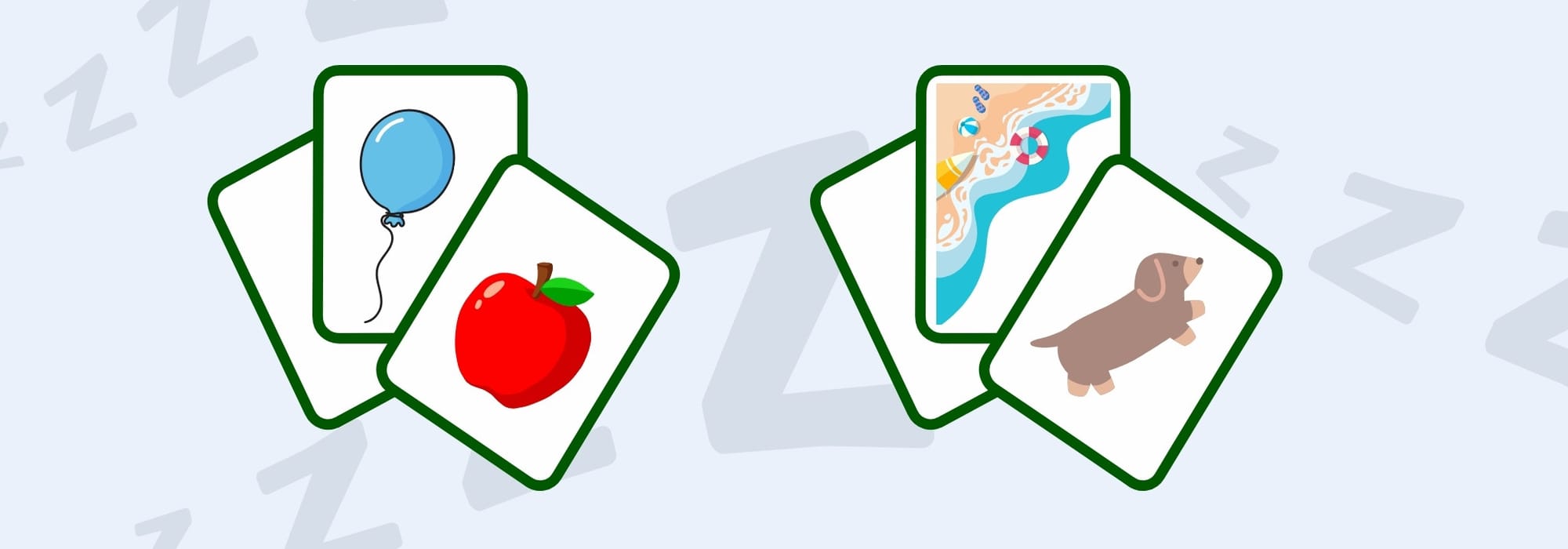Surprisingly, giving your brain more to think about might just be the secret to falling asleep faster
We’ve all been there – lying awake at midnight, replaying the ‘shoulda, woulda, couldas’ of the day. It’s like your brain decides it’s the perfect time to write the next great anxiety novel. Spoiler alert: overthinking has never been the secret to falling asleep.
From counting sheep to wishing for just a few more hours, getting a good night’s sleep isn’t as easy as saying ‘lights out’. According to the NHS, one in three Brits suffer from insomnia, and a survey by Nuffield Health shows 74% of us aren’t getting enough rest. If that sounds familiar, and you’ve tried everything to wake up feeling bright-eyed with no relief, this simple technique could be the answer to your exhausted prayers.
What exactly is cognitive shuffling?
Cognitive shuffling is a clever mindfulness technique, dreamed up by Dr Luc P Beaudoin. In one study, published in the American Academy of Sleep Medicine and the Sleep Research Society, Dr Beaudion noted that cognitive shuffling (also known as Serial Diverse Imagining Task, or SDIT) is a practical and effective method for reducing pre-sleep mental activity, and improving sleep quality.
Unlike traditional meditation, which asks you to clear your mind (easier said than done at 3am), cognitive shuffling gives your brain something to do – deliberately scrambling your thoughts to disrupt that endless loop of overthinking.
Part cognitive therapy, part behavioral hack, it’s like giving your brain a structured bedtime story to distract it from life’s noisy soundtrack. So, if you’re tired of tossing and turning, it might be time to shuffle your way to sleep.
According to Dr Jade Thomas, psychologist and founder of Luxe Psychology Practice, cognitive shuffling is a mental exercise which involves imagining a sequence of random, emotionally neutral objects, words, or scenarios. Think of it like playing a solo game with a mental deck of cards. For Jade, this method aims to engage the brain just enough to prevent it from dwelling on worries or anxieties, helping individuals fall asleep more quickly. Ready to start shuffing? Here’s how to try it out:
Pick a card, any card
Start by picturing a deck of cards made up of cosy, neutral words – such as ‘puppy’, ‘beach’, ’balloon’, and ‘apple’. In your mind’s eye, pick one card. Let’s say you draw ‘apple’. Now, imagine the apple in vivid detail. Is it red or green? Big or small? Juicy or crunchy? Once you’ve given it a quick thought, mentally discard that card, and draw another from the deck.

Change the thought quickly
Dr Thomas explains that this clever technique scrambles your thoughts, breaking up that relentless loop of problem-solving and planning that’s keeping you awake. So, instead of spiralling into stress, your brain is invited to switch to ‘sleep mode’ with a playlist of random, stress-free images and ideas. This approach mimics the brain’s natural transition into sleep by introducing random, fragmented thoughts, just like the spontaneous, dream-like imagery that occurs as we drift off.
How to make cognitive shuffling work for you
Don’t overthink or worry about making sense of the sequence – this isn’t a strategy game! Dr Thomas reiterates the importance of focusing on random words or objects with no emotional connection, in order to avoid your mind wandering. However, she reminds us that, if you do notice your mind wandering, simply acknowledge it and return to the cognitive shuffling technique.
Picture this
Like with most things, cognitive shuffling isn’t a one-size-fits-all solution. It might not send you into an instant slumber, and that’s OK. Dr Thomas recommends pairing it with visualisation techniques, but with a key reminder: keep the imagery neutral and non-stimulating.
Stuck on what to picture? Here are a few calming scenes to get you started:
- A beach with gentle waves lapping at the shore
- Soft sound of birds chirping in a peaceful forest
- A cosy cabin warmed by a crackling fireplace
- Strolling through a park with a happy dog trotting by your side
It’s no secret that anxiety and intrusive thoughts are among the biggest barriers to restful sleep. That’s why cognitive shuffling can be such an effective tool at bedtime. “Often, when we get into bed, it’s the first time all day we’ve had no distractions, leaving us alone with our thoughts,” Dr Thomas explains. “This is when the mind tends to become most active, diving into overthinking, planning, and problem-solving.”
Dr Thomas encourages removing the pressure to fall asleep quickly, as this anxiety only makes drifting off more difficult. “When we’re in an anxious or stressed state, it’s nearly impossible to fall asleep. So, try to release any expectations and just focus on calming your mind.”


Comments